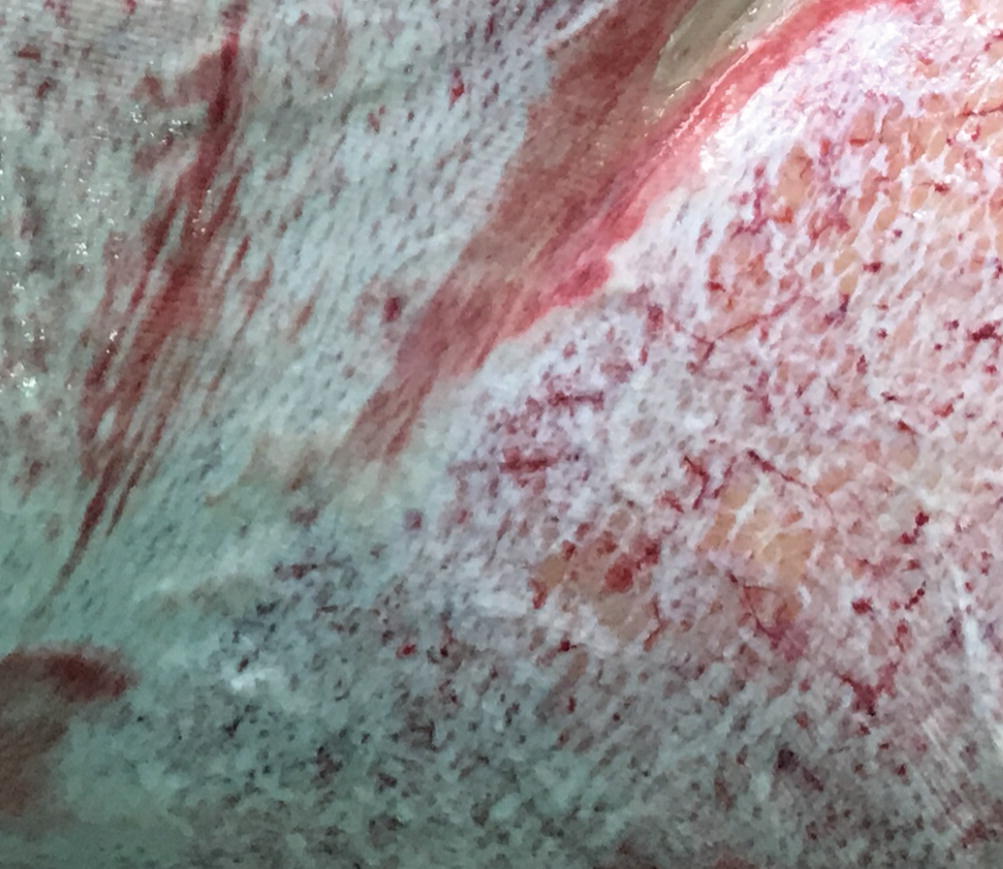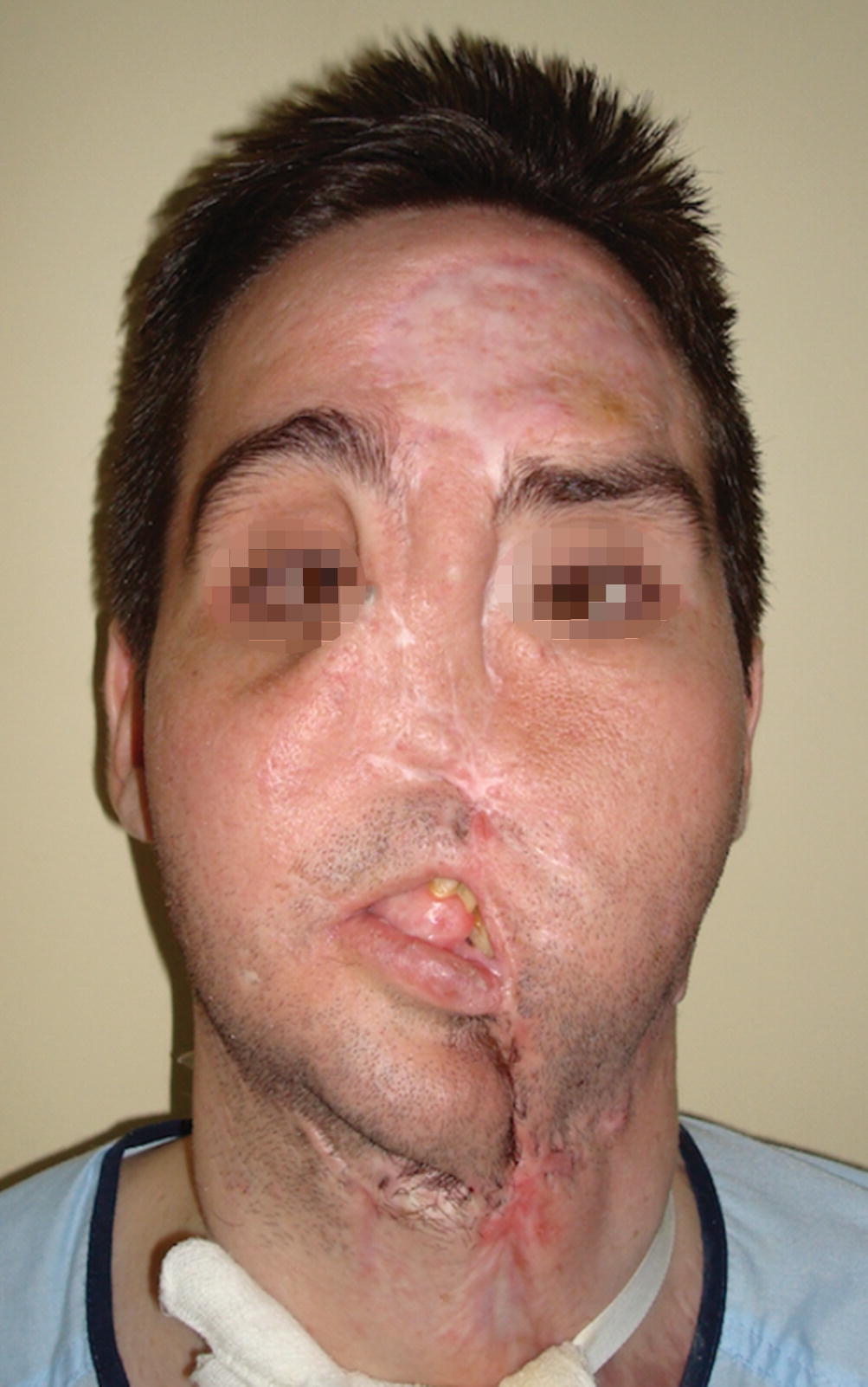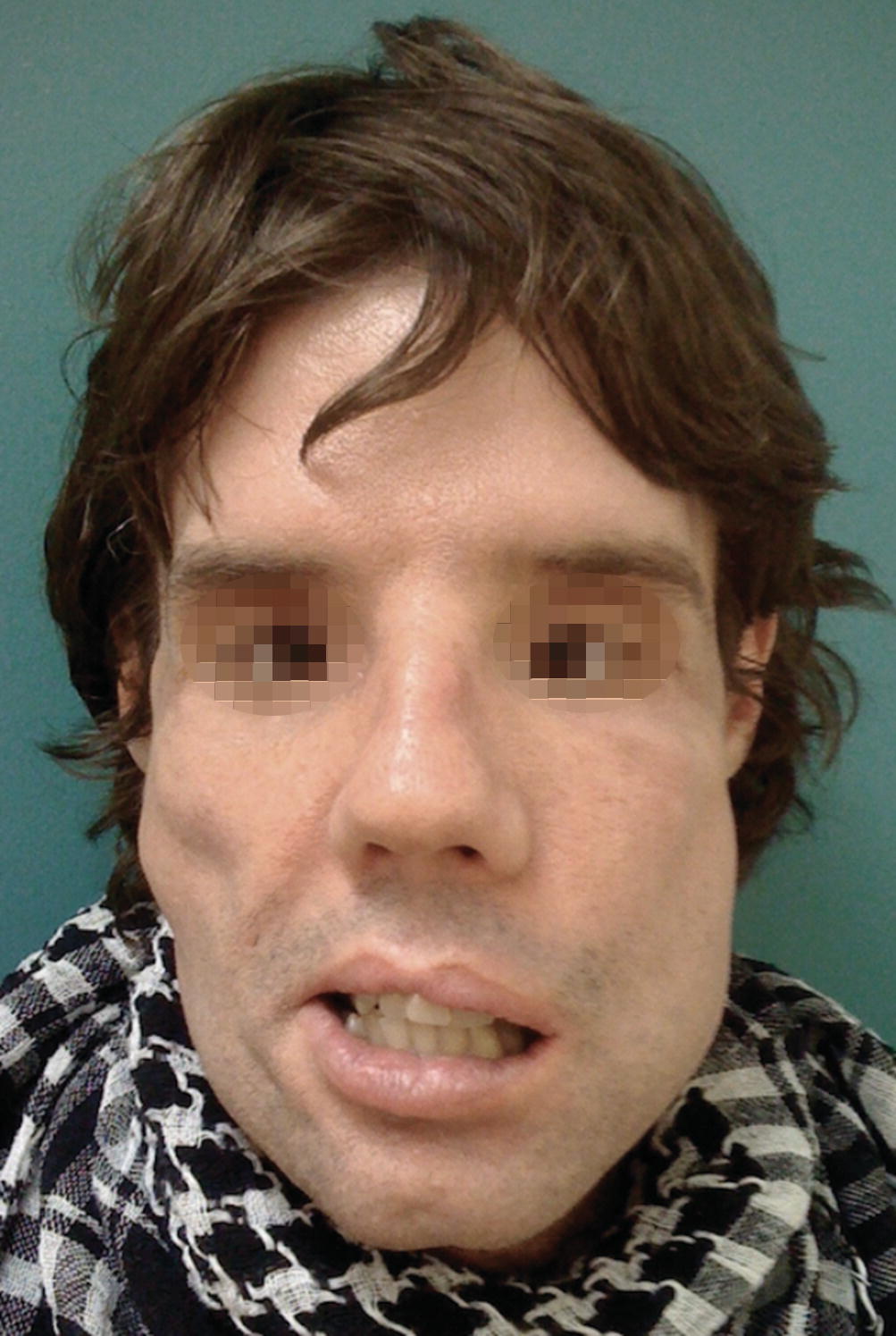Deep partial thickness burns. Aspect before enzymatic debridement

Same wound after enzymatic debridement. Note that all dead tissues have been removed with the protection of living tissue
35.5 Face Transplantation
The modern history of vascularised composite tissue allotransplantation began in 1998, when the first human hand transplantation became a reality. Few years afterwards, in 2005, the first human face transplantation was attempted with success by Devauchelle and Dubernard in France [14].

Facial deformity after gun-shot injury to the face. Scarring, anatomic destruction including facial skeleton is common

Same patient after full-face transplantation including facial skeleton (type V-b face transplant)
Similar to that learnt in many other transplant and plastic surgery disciplines, the development of Facial Transplantation Programs calls for a strong team approach, building a multidisciplinary team that involves all necessary and diverse specialists to make a robust protocol and an experienced team that warrants excellency in outcomes. This multidisciplinary team is formed by all transplant disciplines usually involved in transplant medicine (surgeons, immunologists, infectious disease specialists and renal diseases specialists) but should include also experienced health professionals more involved in the plastic and reconstructive scenario, namely rehabilitation specialists, physiotherapists, occupational therapists, psychologists, psychiatrists and social workers. VCA procedures must be organised in tertiary centres with a strong commitment to transplant surgery and medicine. Such institutions have in common the required laboratory, clinical services and research units that are necessary to perform this new clinical discipline [15, 16].
35.5.1 Indications of Face Transplantation
The indication of facial transplantation resides on important deformities that affect different structures of the human face. They normally involve muscle sphincters (oral, ocular sphincter) and exhibit an important functional impact (impossibilities to speak, feed normally or breathe). The psychosocial impact of the deformity is extremely high, preventing them from functioning as normal human beings. Patients normally experience the facial deformity as health status worse than being death. The motivation of patients’ concentrates on becoming “normal” again and being able to resume their pre-morbid lifestyle.
- 1.
Gun-shot injuries (ballistic trauma)
- 2.
Other posttraumatic injuries
- 3.
Burn deformity
- 4.
Benign tumours (i.e. neurofibromatosis)
- 5.
Postoncological deformities (tumour free and risk free)
Stay updated, free articles. Join our Telegram channel

Full access? Get Clinical Tree








